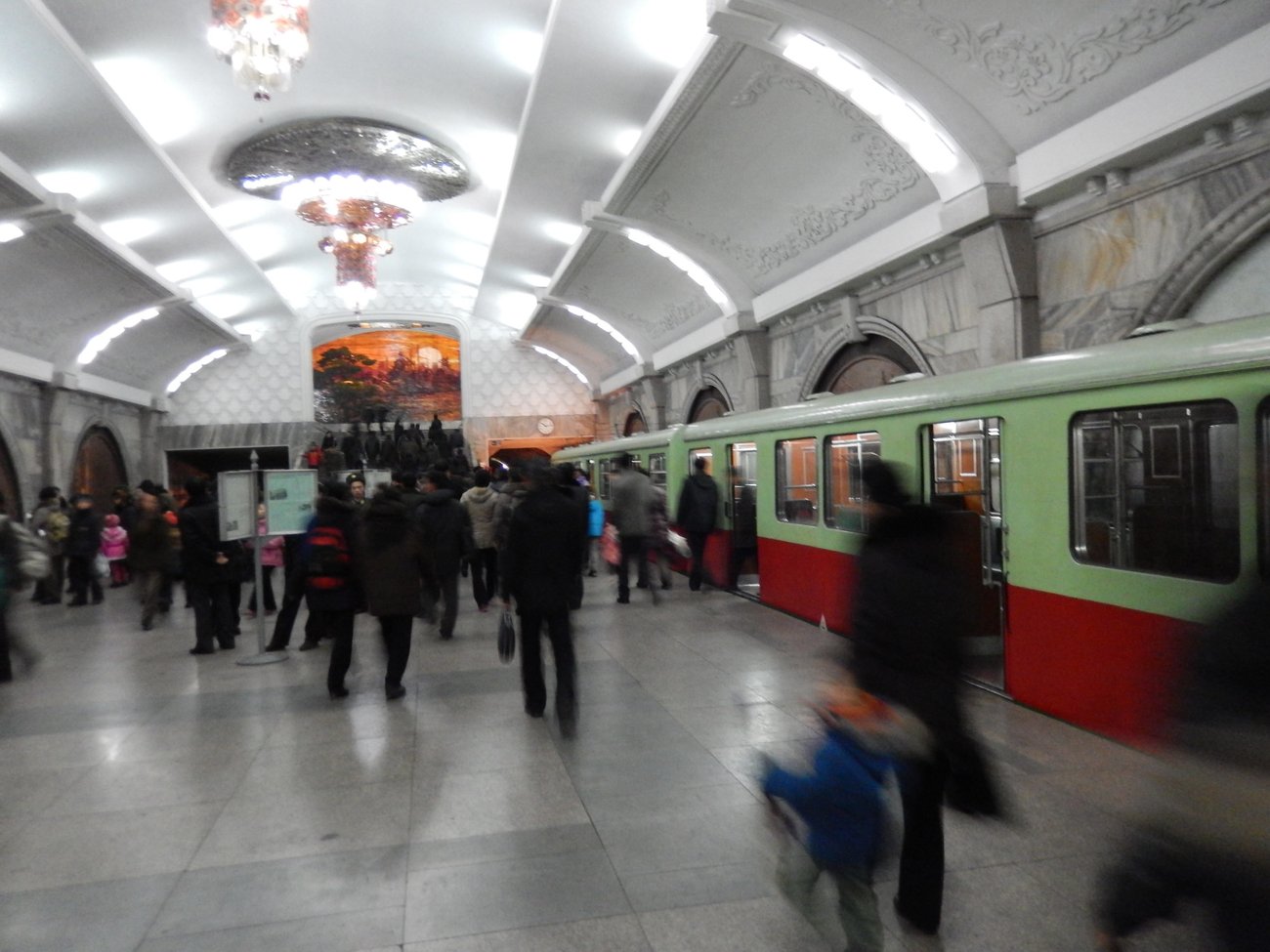
Top Image: Inside the Pyongyang Metro. Photo by Ben Mack.
We like to build things up. Higher and higher, up into the sky. Not exactly a profound statement, huh?
Equally profound is the fact we also like to build things down, deep into the ground. While the reasons are often quite different than building up (read: fears of nuclear war and/or global collapse, or simply to build things literally hidden way from prying eyes), the results can be no less impressive.
With plans reportedly afoot to turn tunnels underneath Auckland’s central business district into tourist attractions, here’s a look at what other cities have done when it comes to building things underground. Dig in… er, have a read.
Inside the Pyongyang Metro. Photo by Ben Mack.
Pyongyang, North Korea
The capital of the Democratic People’s Republic of Korea (North Korea’s official name) boasts an incredibly well-developed underground metro system whose stations, allegedly, can withstand a direct hit by a nuclear bomb. Regardless, the metro (one of the deepest such systems in the world, with stations at least 110 metres deep) is used by thousands of commuters each day, just like in any other big city – even though many of the train carriages are literally from the former East Germany.

Inside the Pyongyang Metro. Photo by Ben Mack.

Inside the Pyongyang Metro. Photo by Ben Mack.
Tallinn, Estonia
Underground dining is a real treat in this Baltic city. A number of restaurants – especially in the historic (and admittedly a bit tourist-centric) Old City – boast underground dining areas. Those include Olevi, which serves European fare with a modern twist in a basement that dates back to the Middle Ages. Sure, it’s not exactly “unique” since underground dining is basically a thing in every city (including a few places in New Zealand), but if it works, then why not?

Olevi. Photo by Ben Mack.
Berlin, Germany
The “Hauptstadt” of Deutschland (and, really, the world) is often called “poor but sexy” – and the city’s well-developed underground infrastructure at least proves that last point. Dozens Berlin’s metro stations are underground (which often also have enough shops and restaurants to basically double as a mall), basement raves no matter the hour have been all the rage since forever, and there are more than a few underground apartments. Moral of the story: if a city as uber-cool as Berlin can embrace going underground, so too can Auckland.

Stadtmitte U-Bahn station in Berlin. Photo by Ben Mack.
Tbilisi, Georgia
This city in the Caucasus nation’s metro system is a lot more than just stations where you can go from one place to another by rail – they’re also popular meeting spots, places to grab a bite to eat, shop, and more.

Outside Varketili metro station in Tbilisi, Georgia. Photo by Ben Mack.
Paris, France
Paris’ catacombs are world-famous, despite how macabre they are. Granted, they were made possible by Paris’ hundreds of years of history, but it shows that tunnels can be turned into popular tourist attractions if marketed properly.


Portland, Oregon
“Shanghai tunnels” have nothing to do with underground infrastructure in the Chinese port city. Instead, the term refers to the tunnels found underneath many businesses in the “Rose City” (as Portland is known) that connected them to the waterfront of the Willamette River, allowing goods to be transported more easily. However, they gained a notorious (and quite possibly untrue, since little evidence actually exists) reputation for enabling the practise of “shanghaiing” local men who, after drinking too much at a bar and passing out, would be whisked through the tunnels and thrown aboard a ship, where they would be forced into service as slaves at sea.
These days, however, the tunnels are a popular tourist attraction – and a boon for the local economy and the city’s image as a mecca for interesting things.

Moscow, Russia
Perhaps no city has as well-developed underground infrastructure as the Russian capital. Not only are its metro stations widely hailed as perhaps the most beautiful in the world (and a major tourist draw in and of themselves), but it’s also the source of more than a few conspiracy theories – which also has the effect of boosting tourism.
Among those rumours is the existence of the so-called “Metro-2,” a “secret” line for use by top officials and the wider public in case of nuclear war. Another rumour relates to the existence of an entire underground city near the Ramenki District, which supposedly contains administrative facilities, hospitals, shops, restaurants, banks, apartments, and even recreational facilities such as cinemas, sports centres and barbershops. While the existence of such a city has never been explicitly proven, US intelligence services apparently believe it to be credible enough to have spent large amounts of money and resources trying to find out.
_large.jpg)






